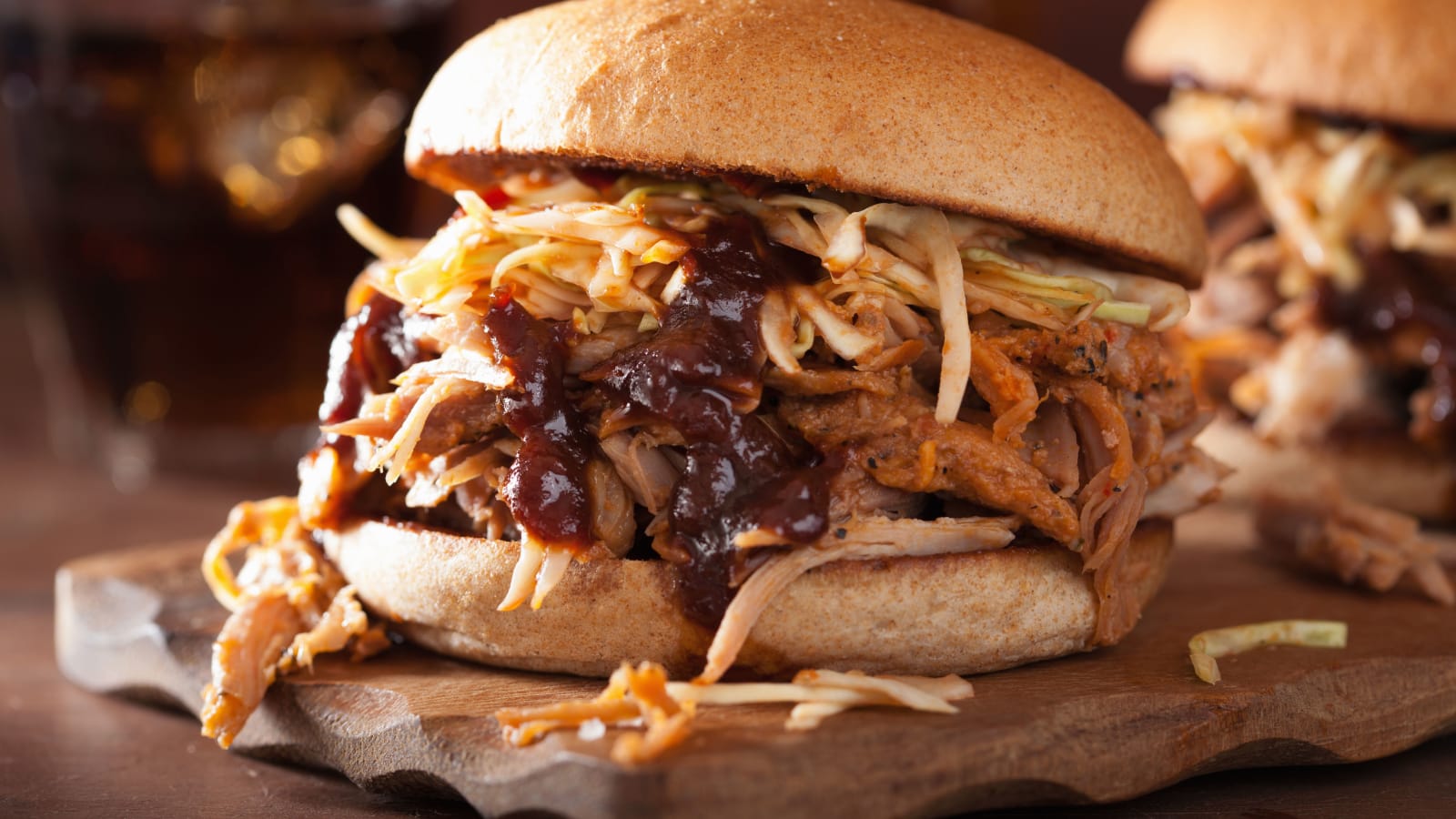
Discover the Best Wood for Smoking Pork
Published: June 16, 2022 (Last Modified: May 25, 2024)Smoking pork is both an art and a science. It requires skill, knowledge, and of course, the right wood. The type of wood you choose can greatly influence the flavor and overall quality of your smoked pork. In this article, we will explore the history, science, and importance of choosing the right wood for smoking pork. We will also delve into the top woods for smoking pork, provide tips for using different woods, and discuss common mistakes to avoid.
Understanding the Art of Smoking Pork
Smoking pork has been a cherished cooking method for centuries. The history of smoking pork dates back to ancient civilizations, where smoke was used to preserve meat and enhance its taste. It was a technique born out of necessity that has now become a culinary tradition. Today, smoking pork is not only a way to preserve meat, but also a way to infuse it with rich, smoky flavors.
In addition to its historical significance, smoking pork is also a science. It involves the careful control of temperature, smoke, and cooking time to achieve tender, flavorful results. Understanding the science behind smoking pork can help you master this ancient art and create mouthwatering dishes every time.
The History of Smoking Pork
The practice of smoking meat can be traced back to prehistoric times. Early humans discovered that exposing meat to smoke helped to preserve it. This was a crucial finding in an era when refrigeration did not exist. Smoking not only preserved the meat but also made it more flavorful, as the smoke infused it with a distinct taste.
Over time, smoking techniques evolved and became more sophisticated. Different cultures developed their own unique smoking methods, using a variety of woods and seasonings to create their signature flavors. In many cultures, smoking meat became a central part of their culinary traditions, and these traditions have been passed down through generations.
For example, in ancient China, smoking meat was a common practice. The Chinese used a combination of smoking and drying techniques to preserve pork, beef, and fish. They believed that smoking not only preserved the meat but also added a unique flavor that made their dishes stand out.
In Europe, smoking meat was also a common practice. In medieval times, smoking was used as a way to preserve meat during long winters when fresh food was scarce. Different regions developed their own smoking traditions, using local woods and spices to create distinct flavors. For example, in Germany, smoked sausages like bratwurst and frankfurters became popular, while in Spain, smoked ham became a delicacy.
The Science Behind Smoking Pork
Smoking pork is a process that involves the interaction of heat, smoke, and time. The smoke from burning wood contains a variety of chemical compounds, including phenols, acids, and aldehydes. When this smoke comes into contact with the surface of the pork, these compounds react with the meat, resulting in changes in flavor, tenderness, and color.
One of the key factors in smoking pork is the temperature. Lower temperatures, around 225-250°F (107-121°C), are typically used for smoking pork. This allows the meat to cook slowly and evenly, while also giving it enough time to absorb the flavors of the smoke. The length of time the pork is smoked depends on the size and thickness of the cut, as well as personal preference.
Furthermore, the type of wood used for smoking can also impact the flavor of the pork. Different woods, such as hickory, mesquite, apple, and cherry, have distinct flavors that can complement different cuts of pork. For example, hickory wood is known for its strong, smoky flavor, which pairs well with pork ribs, while apple wood has a milder, slightly sweet flavor that works well with pork loin.
Additionally, the choice of seasonings and marinades can further enhance the flavor of the smoked pork. Many recipes call for a dry rub or a marinade that includes a combination of spices, herbs, salt, and sugar. These ingredients not only add flavor but also help to tenderize the meat and create a flavorful crust on the surface.
Overall, smoking pork is a delicate balance of art and science. It requires patience, skill, and an understanding of the principles behind the process. By mastering the art of smoking pork, you can create mouthwatering dishes that are sure to impress your family and friends.
The Importance of Choosing the Right Wood
When it comes to smoking pork, choosing the right wood is crucial. The type of wood you use will significantly impact the flavor of your smoked pork. Different woods produce different flavors, ranging from mild and sweet to strong and bold.
How Wood Influences Flavor
Each type of wood has its own distinct flavor profile. For example, hickory is known for its strong, smoky taste, while apple wood imparts a sweet and fruity flavor. Mesquite, on the other hand, adds a strong, bold flavor to the meat.
Experimenting with different woods can help you discover your preferred flavor profile. Some people enjoy the rich, full-bodied taste of hickory, while others prefer the milder flavors of fruit woods like apple or cherry. The choice of wood ultimately depends on your personal preferences and the flavor profiles you want to achieve.
The Effect of Wood on Smoking Time
In addition to influencing flavor, the type of wood you choose can also affect the smoking time. Softer woods like fruit woods tend to burn faster and produce smoke more quickly, while harder woods like hickory and mesquite burn slower. This means that softer woods may require less cooking time, while harder woods may require a longer smoking time to achieve the desired tenderness and flavor.
Top Woods for Smoking Pork
When it comes to smoking pork, there are several types of wood that are considered top choices. These woods are known for their flavor profiles and versatility when it comes to smoking pork cuts.
Hickory: The Classic Choice
Hickory is often regarded as the classic choice for smoking pork. It is known for its strong, smoky flavor that pairs well with pork. Hickory smoke creates a rich, robust taste that is beloved by barbecue enthusiasts. It works well with all cuts of pork, from ribs to shoulder roasts, and adds depth and complexity to the meat.
Apple Wood: A Sweet Alternative
If you prefer a milder, sweeter flavor, apple wood is an excellent choice. Apple wood produces a subtle, fruity smoke that complements the natural sweetness of pork. It adds a delicate touch of flavor without overpowering the meat. Apple wood is particularly well-suited for smoking pork chops, tenderloin, and ham.
Mesquite: For a Strong, Bold Flavor
For those who enjoy a strong, bold flavor, mesquite is the go-to wood. Mesquite smoke is intense and can easily overpower other flavors, so it's best used in moderation. It works exceptionally well with pork ribs and briskets, as its robust flavor stands up well to these cuts. Mesquite smoke adds a distinct, smoky taste that is sure to impress.
Tips for Smoking Pork with Different Woods
Using different woods for smoking pork opens up a world of possibilities when it comes to flavor. Here are some tips for getting the best results with different types of wood:
How to Use Fruit Woods for a Lighter Taste
Fruit woods like apple, cherry, and peach are ideal for achieving a lighter, fruity flavor. To get the most out of these woods, ensure that your wood chunks or chips are well-soaked before smoking. This helps to release the natural sugars in the wood and intensify the fruity flavors. Fruit woods are perfect for smoking pork tenderloin, loin chops, and ribs.
Combining Woods for Unique Flavors
Don't be afraid to experiment with combinations of different woods to create unique flavor profiles. For example, combining hickory with a fruit wood can give you a balance of smoky richness and fruity sweetness. Similarly, mixing mesquite with hickory can add complexity and depth to the flavor. The possibilities are endless, so don't hesitate to get creative with your wood combinations.
Common Mistakes to Avoid When Smoking Pork
While smoking pork is a rewarding and delicious cooking method, there are some common mistakes that can negatively impact the final result. By avoiding these pitfalls, you can ensure that your smoked pork turns out tender, moist, and full of flavor.
Over-smoking Your Pork
One of the most common mistakes when smoking pork is over-smoking it. Too much smoke can overpower the natural flavors of the meat, leaving it bitter and unpleasant. It's important to find the right balance and use just enough smoke to enhance the pork's taste without overwhelming it. Remember, smoking pork is about subtlety and finesse, not overpowering smoke.
Choosing the Wrong Wood for Your Pork Cut
Another mistake to avoid is choosing the wrong wood for your pork cut. Each type of wood has a specific flavor profile that complements certain pork cuts better than others. For example, while hickory works well with ribs and pork shoulder, it may overpower more delicate cuts like pork tenderloin. Consider the characteristics and size of your pork cut when selecting the wood, and choose one that will enhance its natural flavors.
In conclusion, the type of wood you use can make a world of difference when smoking pork. Understanding the history and science behind smoking pork, as well as the influence of different wood flavors, can help you achieve exceptional results. Experiment with various woods, try different combinations, and be mindful of common mistakes to discover the best wood for smoking pork that suits your taste. With the right wood, you can elevate your smoked pork dishes to new heights of flavor and enjoyment.
